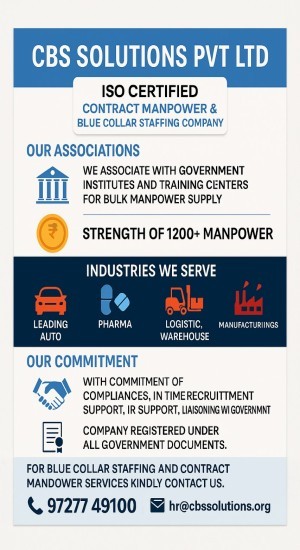This year we found 6 recurring themes among the prognostications of this insightful group.
Every year at this time, we
ask our board members around the world what they think will be the most
important workplace trends in the coming year. Although we usually have tried
to limit ourselves to 5 top trends, this year we found 6 recurring themes among
the prognostications of this insightful group.
Following are our 6
predictions for 2021.
1. AI and machine learning
unmask previously-hidden workforce data to make people-centric decisions.
Artificial intelligence (AI)
and machine learning will finally be woven into workforce management practices,
revealing a treasure trove of data organizations have been collecting – but not
using – for decades. With insight into their workforce data trends – like
scheduling accuracy, absenteeism, overtime usage, and burnout – managers will
be able to head-off potential issues before they arise. Intelligent automation
will also free them from admin-heavy tasks – like managing schedules, approving
time-off requests, and shift changes – while enabling data-driven
decision-making that. Our board encourages caution here, though, warning that
organizations must avoid a “one-size-fits-all” model.
2. Historically tight labor
markets and emerging technologies put people managers in the spotlight.
With unemployment low and the
exodus of baby boomers reaching critical mass, employers globally will face a
historically tight labor market. Sourcing great candidates has never been more
difficult, and retention will become an all-out dogfight. While an employer’s
brand, innovative hiring technologies, and proactive recruiting practices are
more important than ever, it’s organizations with the best people managers that
will ultimately prevail. Organizations will place an increased focus on
leadership development as a retention strategy – especially as Millennials
assume middle management positions – and measuring manager effectiveness will
be HR’s top challenge in 2019. If we’re right about prediction 1 above, then as
AI and machine learning take over mundane managerial tasks, deficits in
leadership competencies will be more readily exposed if managers aren’t using
that extra time to support and develop workers.
3. The changing face of
education redefines trades and challenges traditional hiring practices.
As the student loan debt
crisis furthers the debate about the value of a college education and
credentialing programs for job-specific skills emerge, tomorrow’s best
employees may take an unconventional path to employment. Competencies that once
required a degree – such as coding, robotics, and data analytics – are being
redefined as skilled trades with the rise of certificate and micro-credential
programs. As yesterday’s jobs become augmented by automation, new skills will
be required for traditionally “blue-collar” roles. Employers need to revamp
their hiring profiles and recruiting practices to tap into this new pool of
qualified candidates who will staff the shop floor, store floor, hospital
floor, and top floor of the future. Millennial parents, may urge their
school-aged children to take an alternative educational path for a brighter
financial future.
4. Further fracturing of
employment laws globally, nationally, and at the local level strain organizations.
From minimum wage to sick pay,
to fair scheduling proposals to the right to disconnect, governments around the
world will continue to evolve employment laws. Ever-changing regulations around
the world will put increased strain on organizations to avoid sanctions, fines,
class action lawsuits, ns to avoid sanctions, fines, class action lawsuits, and
reputation-damaging headlines. Technology will be vital for organizations to
manage scheduling-related mandates, ensure unbiased practices, monitor fatigue
and overtime management, and ensure employees are paid accurately and fairly –
all while providing analytical insights that surface risky managerial practices
otherwise buried in a sea of employment data.
5. Employee-agnostic
flexibility, consumer-grade tech, and the rise of the occasional time worker
redefine “work your way.”
All employees – salaried,
hourly, and gig – crave control over when, where, and how they work. While
employers have put more focus on flexibility and alternative work schedules,
most have been slow to reengineer processes that underpin how the organization
runs. Tools must meet employees where they naturally work – such as on their
mobile phone, tablet, or favorite social networking platforms. The gig economy
and emergence of the “occasional-time worker” will force organizations to
replace traditional hiring and scheduling processes with systems that enable
workers to choose when, where, and how long they work. Mobile-friendly
processes, self-service features, and immediate access to real-time data in a
consumer-grade technology wrapper will help drive the next iteration of the
flexibility phenomenon, as predictability of anytime work will empower
employees to be more productive, make more intelligent decisions, and be more
engaged.
6. Greater emphasis on
disaster preparedness as part of a holistic human capital management
strategy.
Disasters large and small,
natural and man-made, have unfortunately become the norm. Organizations
worldwide have been challenged to respond effectively to increasingly frequent
crises, with HR, operations, and payroll forced to take center stage in the
lives of affected employees. With more emphasis on company culture, caring, and
“doing what’s right” in a world where disasters – and a company’s response to
them – are frequently in the news, there is a new level of expectation for an
organization’s response, responsibility, and employee benefits. Organizations
of all sizes must take a hard look at disaster policies, processes, and
capabilities – including both taking care of employees in the moment and
rebuilding in the wake of disaster, which will be near impossible for those
operating on a DIY workforce management, HR, and payroll system. Sustainability
plans that today primarily account for company assets and data will need to
incorporate employees and their families.

